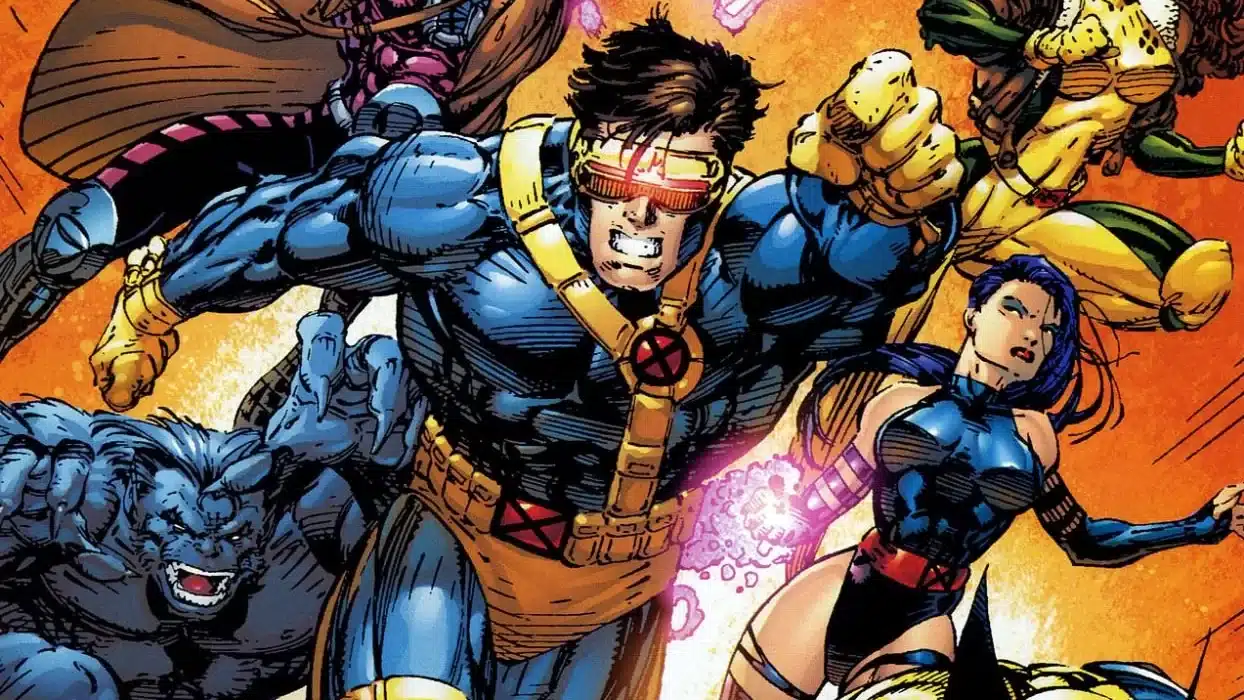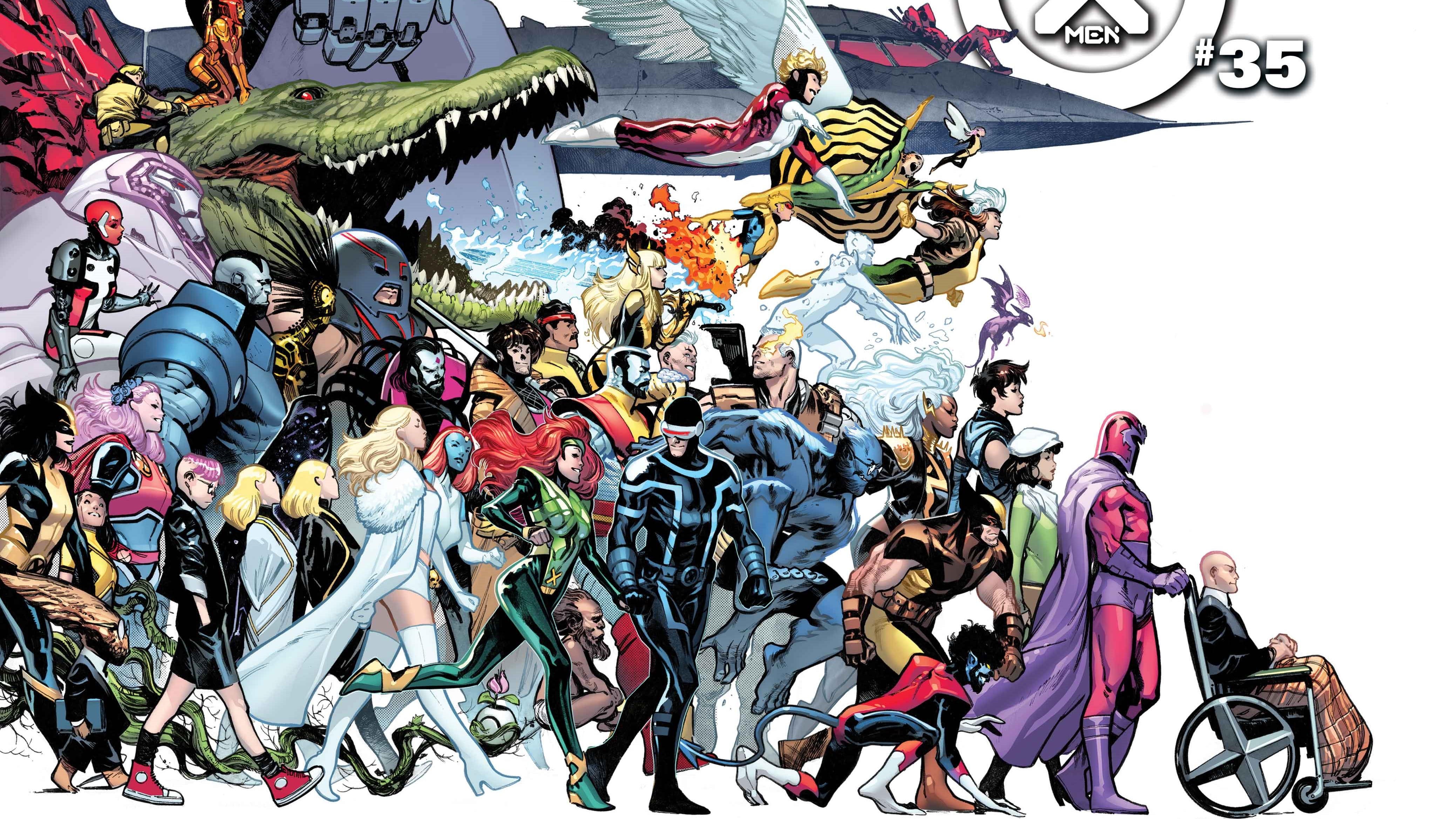In AGE OF X-MAN: THE AMAZING NIGHTCRAWLER #1 by, Seanan McGuire and Juan Frigeri everyone’s favorite blue and fuzzy mutant is the most popular and famous figure in the world. This is the best indication we have that this alternate reality is actually the utopia it is claimed to be. Over forty years past his introduction and it still shocks me the Kurt Wagner isn’t the biggest name, not just in comics, but in media as a whole. Nightcrawler possesses the winning combination of an incredible and visually exciting design alongside a charming and likable personality. He has been beloved by X-Men fans for generations but has not been able to teleport himself out of that bubble and into solo success.
It isn’t that Kurt has been ignored, writers pretty much immediately got the appeal. Nightcrawler was a pet character for his creator, Dave Cockrum. While Dave was drawing UNCANNY X-MEN and Chris Claremont was writing, Nightcrawler seemed to be the break-out character, pulling a lot of focus. This lessened after John Byrne began drawing the title and wanted to focus on the Canadian Wolverine. Still, Nightcrawler remained a popular mutant. He was the second X-Man to get a solo mini-series and briefly led the X-Men in the mid-80s. During the mutant madness of the early 90s, Nightcrawler was positioned as the lead character in Excalibur. But as time went on it became clear that no one was able to figure out what to do with the character.
Credit to Marvel, it hasn’t been for lack of trying. Nightcrawler just started his 5th solo series, but none of them have lasted past issue #12. While the jury is still out on THE AMAZING NIGHTCRAWLER (it had an enjoyable but imperfect first issue), only one of his solo series actually got to the core of what works about the character. Dave Cockrum’s 1985 NIGHTCRAWLER limited series sees Kurt on a swashbuckling adventure where he gets to become a pirate, save a princess, and live out his Errol Flynn fantasies. It isn’t a self-serious character piece or an examination on the human condition, it is just a beautiful drawn romp by way of Edgar Rice Burroughs. This is the sweet spot for Nightcrawler.

Other attempts to kick off a story about the character fell on their face by looking at the wrong aspects of Nightcrawler. Chris Kipiniak and Matthew Dow Smith’s 2002 NIGHTCRAWLER for the Marvel Icons line examined a relatively recent (at the time) development for the character, his ordination into the Catholic priesthood. Ignoring the fact that no one involved in this story knew how priest work, it is an interesting angle, but one that fundamentally changes the character and his appeal. Up until around 2000, Nightcrawler’s faith was an aspect of the character, but not the defining one. He was religious in the way most religious people are. It was part of his life sure, but it didn’t define every action he made. Kurt wasn’t one to go on moody diatribes about the existential nature of faith. This series focused on that at the expense of the joy and energy that normally comes when Nightcrawler is on the page.

I’m curious why external media choses to play up this aspect of the character. In both his appearance on X-MEN: THE ANIMATED SERIES and X2: X-MEN UNITED, Kurt’s defining characteristic is his piousness. Perhaps the creators see the appeal of exploring the duality of a demon on the side of angels, but in execution it never goes deeper than that. I wouldn’t advocate for eliminating his faith, it is an interesting dimension to the character, only to balance it with other aspects of his personality.
Roberto Aguirre-Sacasa and Darick Robertson tried again in 2004 with a book that leaned really hard into the supernatural. This is post-Draco, a horrible story when Kurt was revealed to be the son of a satan. It mixed those ideas with the well-established concept that his adopted mother, Margali Szardos, and his sister/lover were both powerful sorceresses. Again, this could be a fun concept if it was just Nightcrawler plus magic. Instead it became an overly dark and serious story about exorcism, abuse, and the destruction of relationships.

The crux of this twelve issue series deals with Nightcrawler’s brother Stefan Szardos. Kurt was forced to kill a demon possessed Stefan to prevent his brother from murdering children. This led to the formation of the mob the chased Kurt in GIANT SIZE X-MEN #1. It’s a dark origin for the character, and one most writers tend to leave in the past. It doesn’t play to any of the swashbuckling strengths that Nightcrawler has and doubles down on some of the worst tendencies of mid-00s comics. The last issue is Nightcrawler having an existential crisis while talking to Mephisto. It isn’t what anyone wanted from the character and that tone is a big reason why it didn’t resonate with readers.
The closest we have gotten to a Nightcrawler ongoing that actually worked was Chris Claremont and Todd Nauck’s 2014 series. It came in the aftermath of Nightcrawler fighting his way out of heaven and hell to come back to life in Jason Aaron’s AMAZING X-MEN. Tonally, the book hit a sweet spot, while probably leaning into the X-Men elements of the character too much to make it stand out. The first arc dealt with magic thanks to the return of Margali Szardos, but it was done in a whimsical, Excaliburesque way. Claremont smartly built up a unique supporting cast around Kurt, including the students Ziggy and Scorpion Boy, and an antagonistic love interest in the form of The Crimson Pirates’ Bloody Bess. Nauck’s artwork elevated the series by providing a joy that is essential to the character.

Unfortunately, the series had several roadblocks to success. Claremont’s tone and character voices were as good as his plots were bad. It was a mishmash of canon that was better left forgotten with a writing style that never evolved out of the 80s. The market dynamics at the time did little to help the book last. AMAZING X-MEN had just recently begun, and it was already marketed as the “Nightcrawler book”. Many customers weren’t going to double dip on the character. At the same time, Marvel was starting solo series for MAGNETO, CYCLOPS, STORM, and DOOP. Those existed in tandem with five other X-Men team books, two Wolverine books, and two books featuring secondary X-Teams. The market was flooded with X-Men and Nightcrawler didn’t stand a chance.
Even with these failures, Kurt Wagner remains beloved and his current mini speaks to that. In the Age of X-Man, the only intelligent thing Nate Grey did was make Nightcrawler the biggest star in the world. He is a celebrity in every sense of the word. He is beloved and iconic as a movie star and the premier superhero. It is no coincidence that the book is titled THE AMAZING NIGHTCRAWLER, or that the logo is a riff on Spider-Man’s. In the Age of X-Man, Kurt is as loved and well known as Spider-Man is our world. The trick is replicating that adoration.

Nightcrawler should be a slam dunk as a solo hero outside of the X-Men. If writers can lean into the swashbuckling adventure and away from existential questions of religion, they have a shot at making Nightcrawler a world-wide phenomenon. Let Kurt fight The Spot or Kraven The Hunter to get him out of the bubble of the X-Men. Let him join the Avengers and prove his mettle against the biggest threats. Let my dude be what Spider-Man is, the iconic character of the Marvel Universe. He deserves it.
PS: Give him his damn beard back!

Zachary Jenkins runs ComicsXF and is a co-host on the podcast “Battle of the Atom.” Shocking everyone, he has a full and vibrant life outside of all this.






